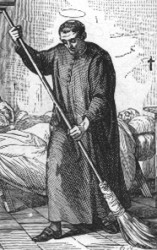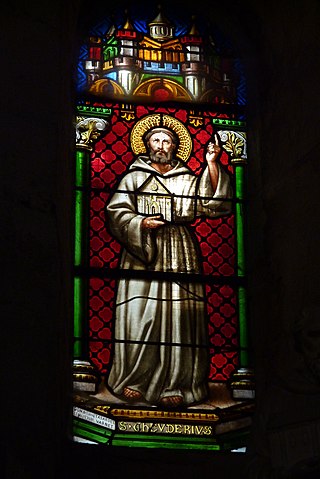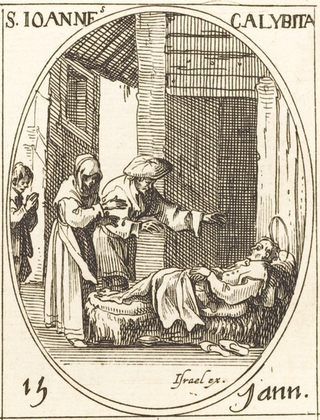Pope Theonas of Alexandria was the 16th Pope and Patriarch of Alexandria, reigning from 282 to 300.

Francis Caracciolo, born Ascanio Pisquizio, was an Italian Catholic priest who co-founded the Order of the Clerics Regular Minor with John Augustine Adorno and Fabrizio Caracciolo. He decided to adopt a religious life at the age of 22.

Isidore of Pelusium was born in Egypt to a prominent Alexandrian family. He became an ascetic, and moved to a mountain near the city of Pelusium, in the tradition of the Desert Fathers.

Alexander of Jerusalem was a third century bishop who is venerated as a martyr and saint by the Eastern Orthodox Church, Oriental Orthodox churches, and the Roman Catholic Church. He died during the persecution of Emperor Decius.

Saint Emmeram of Regensburg was a Christian bishop and a martyr born in Poitiers, Aquitaine. Having heard of idolatry in Bavaria, Emmeram travelled to Ratisbon (Regensburg) some time after the year 649 to the court of Theodo I, Duke of Bavaria. He supposedly travelled up the Loire, crossed through the Black Forest and then followed the Danube to Regensburg. Theodo welcomed Emmeram to his court, where he laboured for three years carrying out missionary work. During this time, he gained a reputation as a pious man. He died circa 652 and is buried in St. Emmeram's in Regensburg, Germany. His feast day in the Catholic Calendar of saints is September 22.

Isidore the Labourer, also known as Isidore the Farmer, was a Spanish farmworker known for his piety toward the poor and animals. He is the Catholic patron saint of farmers and of Madrid, El Gobernador, Jalisco and of La Ceiba, Honduras. His feast day is celebrated on May 15.
Wulfsige III was a medieval Bishop of Sherborne and is considered a saint.
Saint Gildas the Albanian also known as Gildas the Scot, is a spurious early British saint. Apparently identical with Saint Gildas, he was invented in the 17th century to explain away inconsistencies in mediaeval sources.
Serapion the Sindonite was a Christian monk from Egypt who is considered a saint by the Catholic Church.

Finan Cam, Abbot of Kinnity was an early Irish saint associated with County Kerry, Ireland, who lived in the 6th century AD, and possibly the 7th century. To distinguish him from other saints of the same name the appellation of Cam or "crooked" has been given to him, either because he was stooped or because he had a squint. His feast day is 7 April.
Saint Armogastes was a 5th-century Roman noble at the Vandal court in Africa who resisted conversion to Arianism. He was enslaved and put to work in the mines, then as a cowherd. His feast day is 29 March. Archinimus and Saturus suffered at the same time, and were also reprieved from death.
Saint Isidore of Scetes was a 4th-century A.D. Egyptian Christian priest and desert ascetic.

Saint Theuderius was a Christian monk, abbot and hermit. His feast day is 29 October.

Saint John Calybite was a Greek monk and hermit. He left home at a young age and for several years was a monk in Jerusalem. He returned home disguised as a beggar, and his parents did not recognize him, but gave him a hut to live in. He revealed himself to his mother when on his deathbed. His feast day is 15 January.
Saint Bécán was an Irish monk who founded a monastery at Kilbeggan and is considered by some to be one of the Twelve Apostles of Ireland. His feast day is 5 April.
Saints Leo and Paregorius were two early Christian martyrs at Patara (Lycia) in Anatolia. Their feast day is 18 February.
Saint Thalelæus was a 5th-century Syrian hermit known for continuous weeping. His feast day is 27 February.
Saint Maccai was an Irish missionary who founded a monastery on the Isle of Bute, Scotland. His feast day is 11 April.
Saint Potamon of Heraclea was a bishop of Heraclea in Egypt who was persecuted under the emperor Maximinus Daza, attended the First Council of Nicaea, then was martyred in Egypt by the Arians. His feast day is 18 May.

Saint Munde was a Scottish abbot in Argyll, Scotland. There is some confusion between this saint and the much earlier Saint Fintan Munnu. His feast day is 15 April.